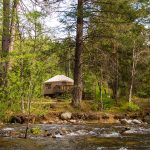The shores of Lake Superior aren’t always friendly and welcoming to kayakers. Winters can be rough up here, but the spring thaw opens access to some amazing sections of coastline. Hopping in your kayak is often one of the best ways to explore the lake’s coastline because you’ll be able to access places that other motorized vessels simply can’t go. Kayaking on Lake Superior is an adventure you won’t forget.
That being said, there is a lot to consider when you’re planning a kayaking trip on Lake Superior. It’s the world’s largest freshwater lake by surface area (almost 32,000 square miles!), so there are also a ton of places to explore on your kayak.
If you’re planning on getting out and exploring in Ontario this season, you should follow the recommendations in our guide to kayaking along Lake Superior in Ontario!
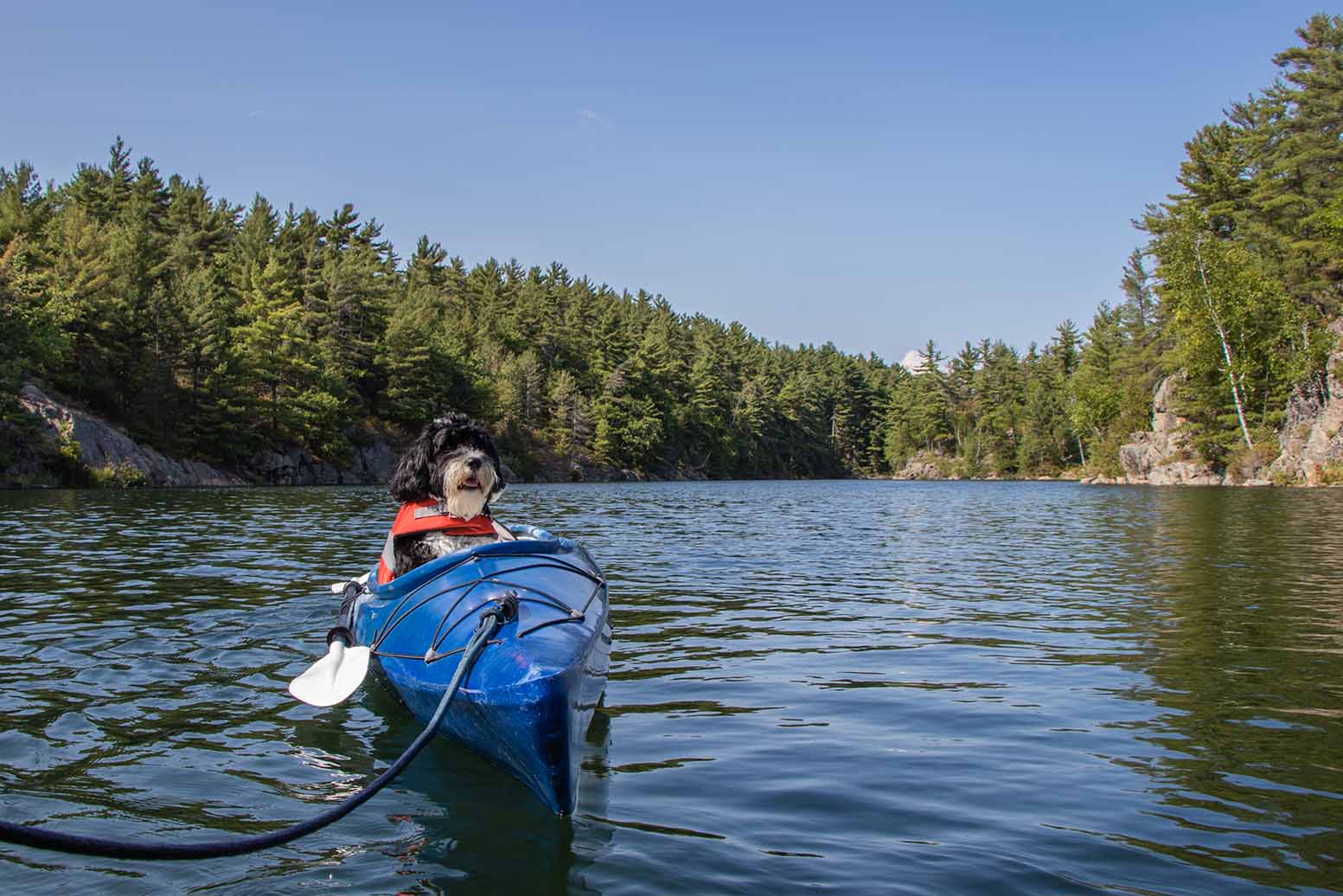
Portuguese water dog in a kayak. Photo: Getty Images
Planning Your Route
The Ontario coastline on Lake Superior is massive! It extends from Sault Ste. Marie in the southeast all the way up and around almost to Grand Portage State Park (which is actually just across the border into the U.S.). A huge percentage of the lake’s 2,700 miles of shoreline are in Ontario, so planning your route really depends on where you’re going to start.
When you have an idea where you’re going to go, check into local guide services or boating outfitters in that region. They are often the best resource for paddling information and can help you gain access to valuable resources that will help you plan a safe route for your kayaking adventure.
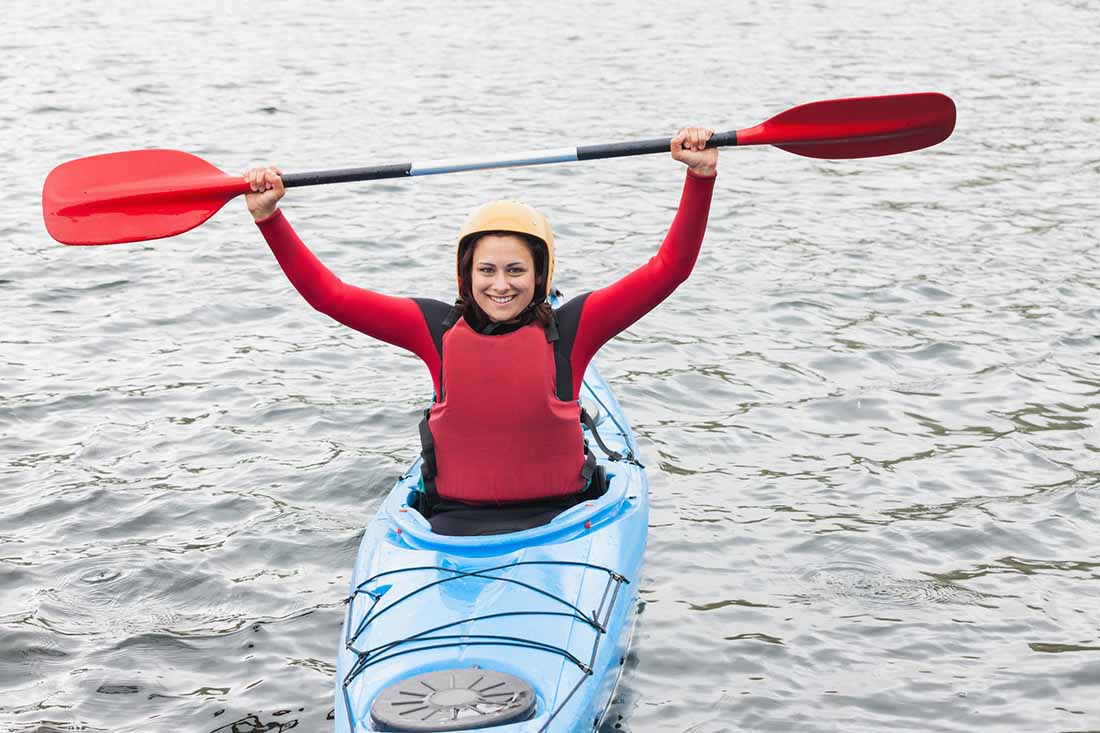
A woman in protective gear. Photo: Getty Images
Preparing For The Four W’s (Wind, Waves, Weather, Water)
Because Lake Superior is such a large body of water, it’s really important to be prepared for weather changes before you start kayaking. For starters, an app like Ventusky can be a great tool for understanding the predicted wind direction where you’re going to be paddling. That will help you plan to have the wind at your back on your way home when you’re a little fatigued.
And where there are high winds on Lake Superior, there can sometimes be large waves. Depending on whether you’re paddling on a protected bay or a more open section of shoreline, waves on Lake Superior can sometimes reach record heights up to 29 feet when large storm systems move through.
The wave heights where you paddle will depend on how many lake miles of fetch are upwind from you, so it’s worth studying more about fetch and how it can impact waves on a large body of water.
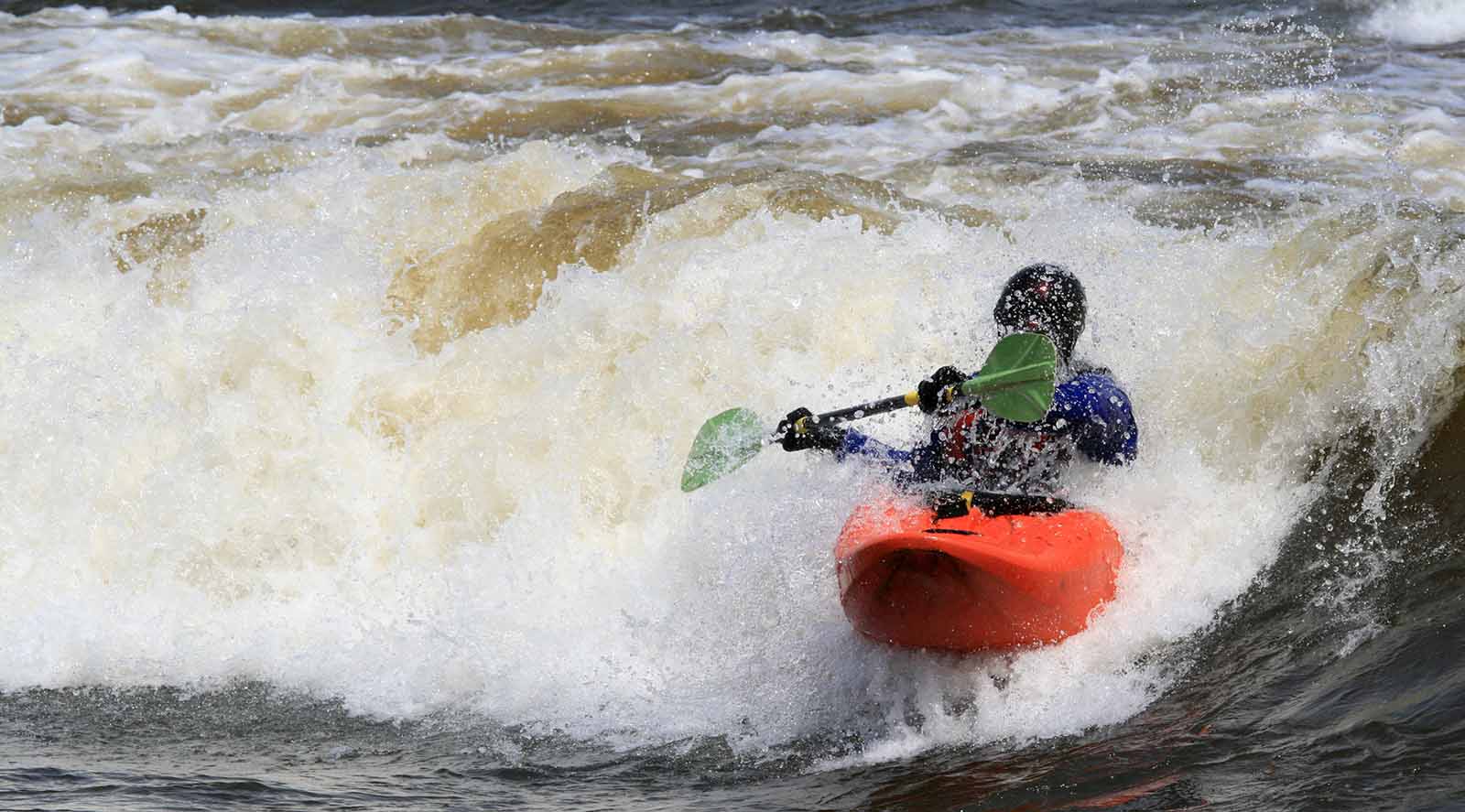
Savvy kayakings can handle the waves of Lake Superior. Photo: Getty Images
When we mention the weather, we’re largely talking about temperature and precipitation. Extremely hot temperatures during your visit will require more shade and sun protection. On the other hand, colder temperatures and the expectation of rain could cause you to delay your paddle trip. At the very least, it should cause you to invest in a better rain jacket and paddle skirt so that you’re prepared if it rains while you’re paddling.
And finally, water temperatures on Lake Superior average only 40 degrees Fahrenheit over the course of the year. While temperatures can warm up to about 70 degrees Fahrenheit during the summer months, you should be aware of the water temperature of the lake when you’re visiting.
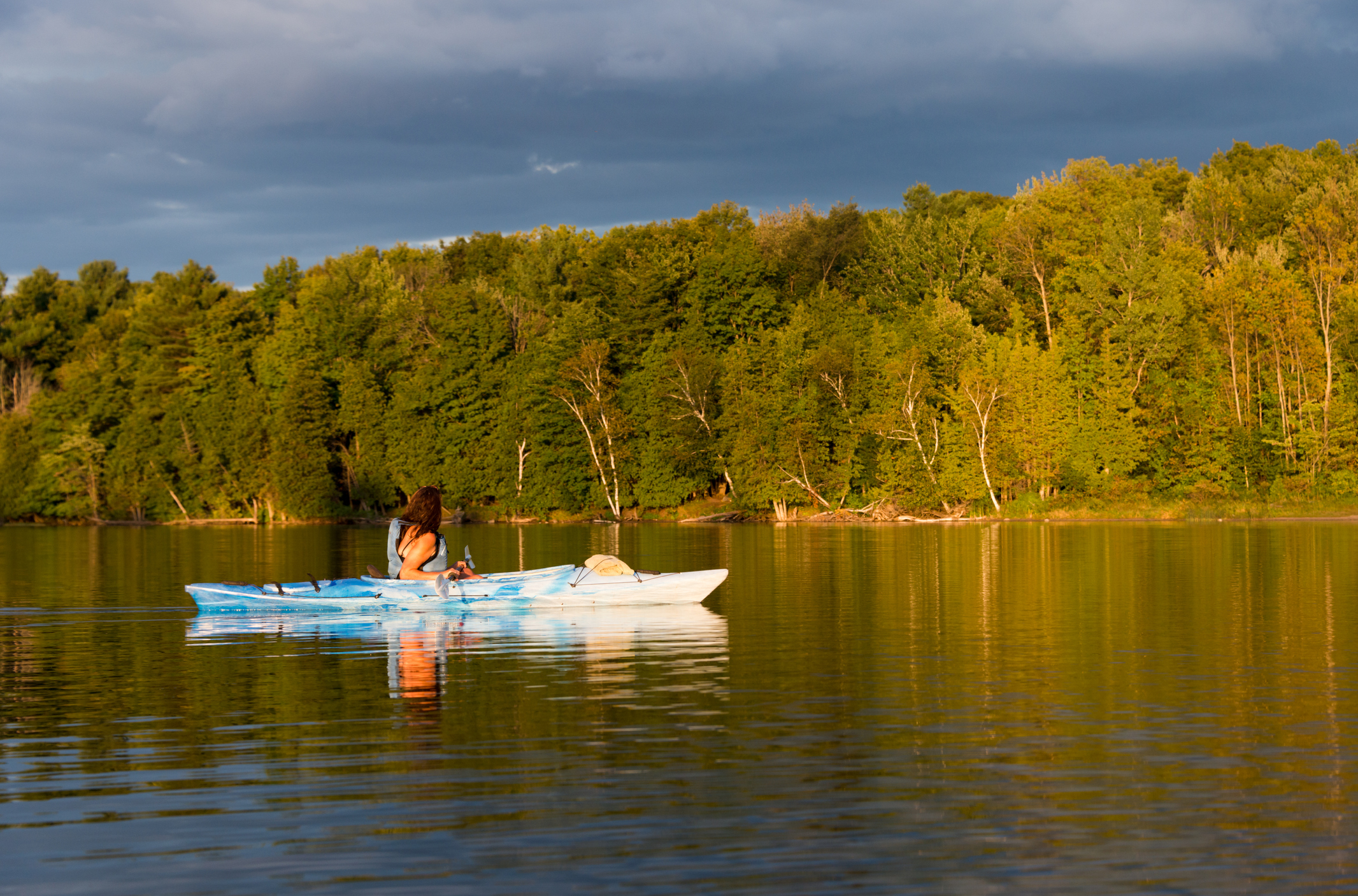
Kayaking along Ontario’s pristine shore. Photo: Getty Images
When combined with the air temperature during your visit, the water temperature of the lake can impact the safety of your paddle. To learn more about water and air temperature combine to impact your risk of hypothermia while kayaking, check out this article.
Overall, being aware of predicted wind speeds, chances of precipitation, wave size, and other environmental factors are critical to a safe kayaking experience along Lake Superior in Ontario. Make sure you do your research into these factors before you hit the water.
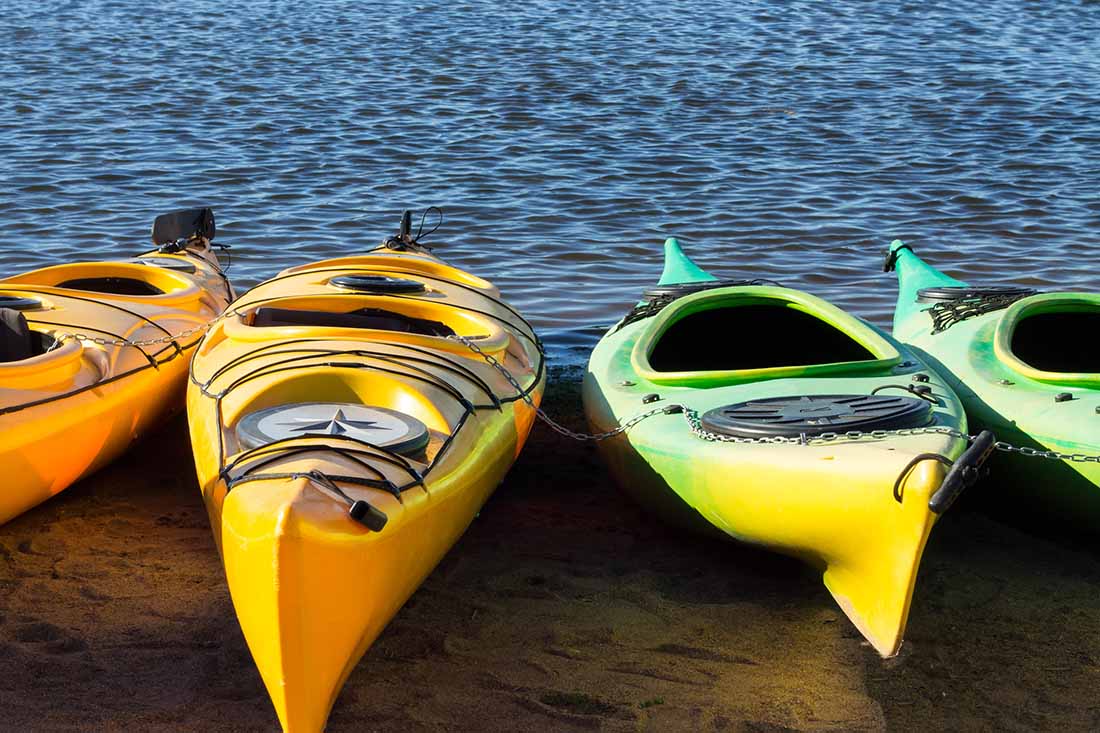
Having the right gear is a key to successful kayaking. Photo: Getty Images
Packing Appropriately
Having the right supplies on your kayak will help you be prepared if weather changes or you encounter unexpected challenges on the water. If you’re planning to go kayaking along Lake Superior in Ontario, here’s a brief checklist of gear that you should pack:
- PFD (personal flotation device)
- Spray skirt
- Wetsuit or drysuit
- Kayak paddle (and spare kayak paddle)
- Paddle float and leash
- Whistle
- Headlamp
- Waterproof map
- Compass
- Bilge pump and sponge
- Marine radio
- Waterproof personal locator beacon
- Kayak deck bag (for storing gear that can’t get wet)
- Water
- Snacks
- Hat
- Sunglasses
- Sunscreen
- Bug Spray
- A reflective device
- Dry clothing layers (non-cotton, fast-drying)
This is by no means a comprehensive list of ALL the supplies you might need when paddling on Lake Superior. But if you prepare by packing all of these items before you head out on the water, you’ll be better prepared if unexpected circumstances arise.
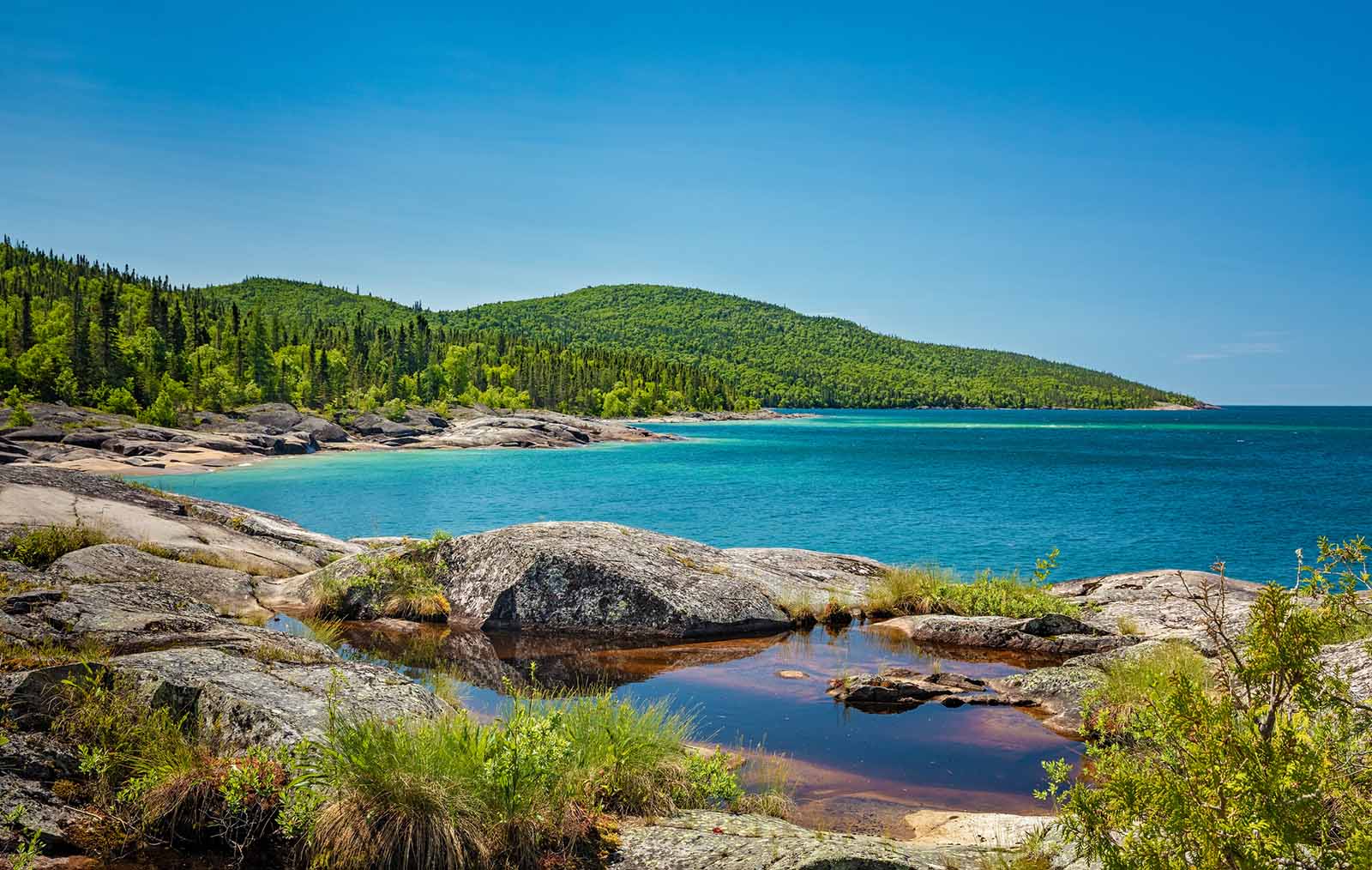
Beautiful Parklands on Lake Superior in Ontario. Photo: Getty Images
Top Paddling Picks
Now that you know a little more about paddling on Lake Superior in Ontario, check out our top picks for the best paddling locations in this region!
Kayaking in Thunder Bay is arguably the only chance for “urban paddling” along Lake Superior in Ontario. Thunder Bay Harbour is a protected area with calm waters and kayaking here offers an exceptional view of the Sleeping Giant, which is one of the most iconic landmarks on the lake in this region.
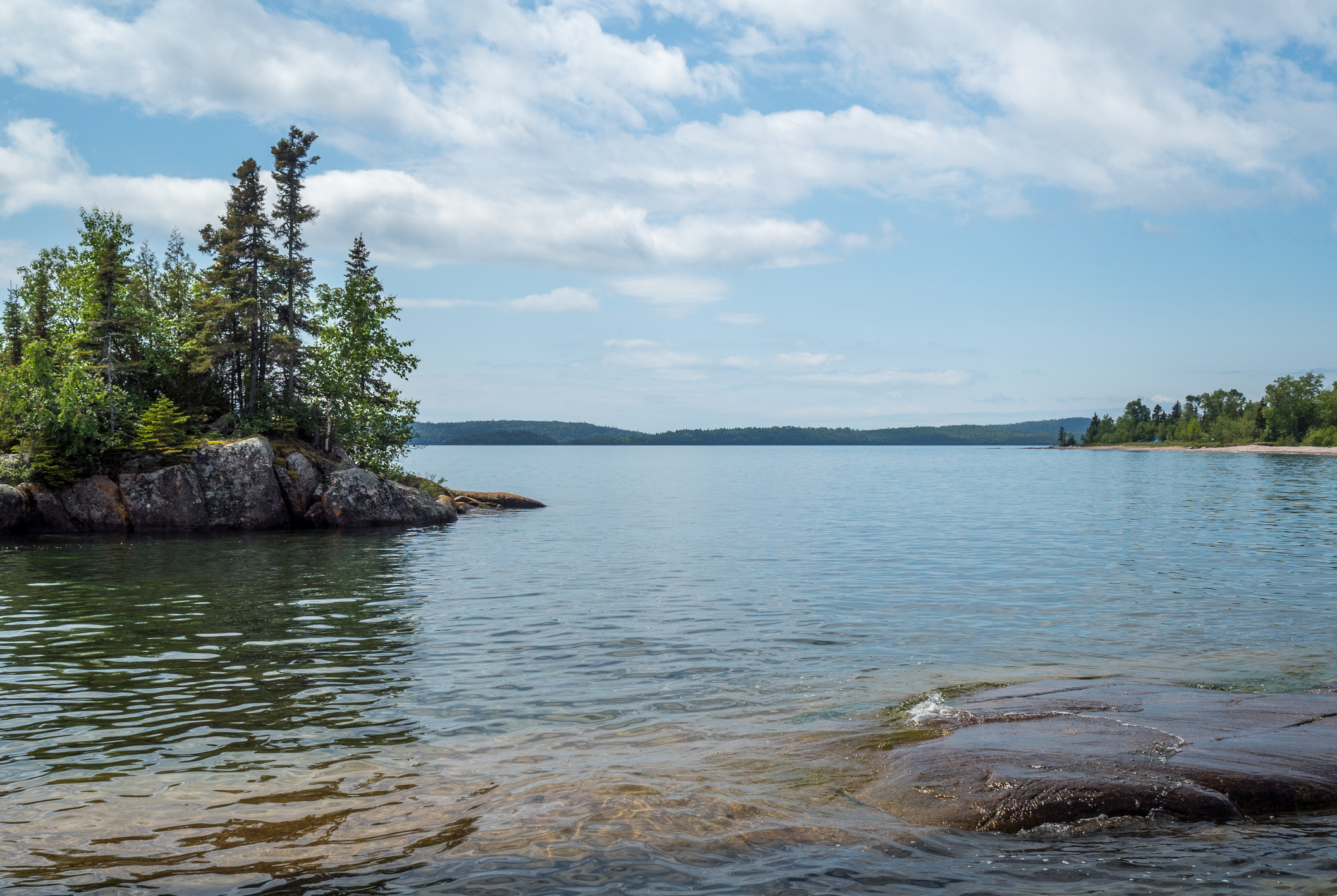
Lake Superior Provincial Park Ontario. Photo: Getty Images
Lake Superior Provincial Park offers a number of marked canoes and kayaking routes to choose from. One of the more popular trips is the 5 to 7 day paddle from Michipicoten Bay to Agawa Bay.
Pukaskwa National Park has some of the most rugged coastlines along Lake Superior in Ontario. Much of the wave action on the lake crashes against the shores of this park, so you’ll need to plan to avoid heavy winds if you want to paddle here!
Where To Camp Nearby
The Happy Land RV Park in Thunder Bay is a great choice if you’re planning to paddle anywhere along the northwestern shores of Lake Superior in Ontario. They welcome RVs that require both 30 and 50 amp service and also offers great access to the “Niagara of the North” – Kakabeka Falls!
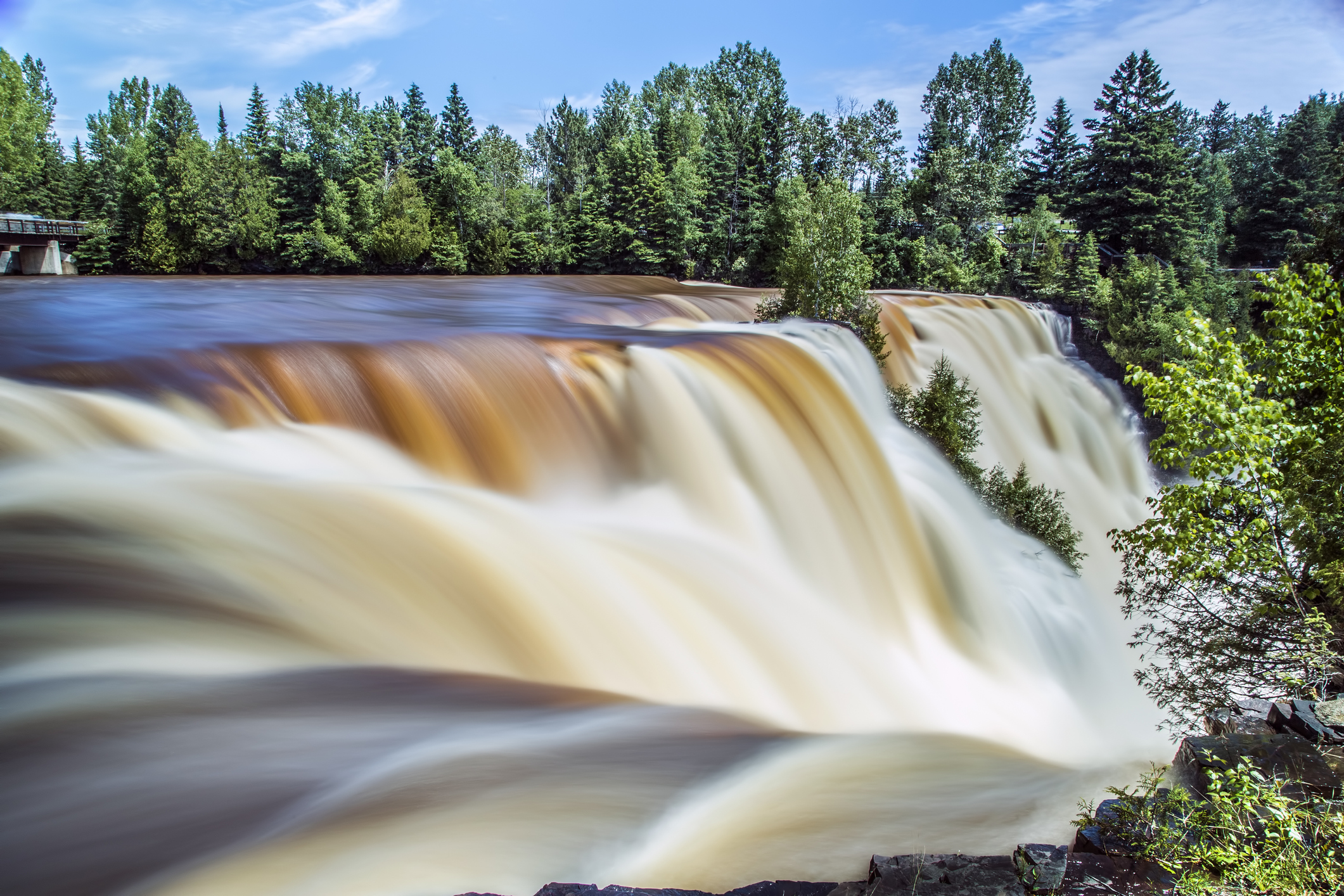
Kakabeka Falls in Thunder Bay in Ontario. Photo: Getty Images
The Wawa RV Resort and Campground in Wawa is an excellent place to stay if you’re planning to paddle in the Lake Superior Provincial Park. The campground has a total of 60 sites and it can accommodate RVs with a maximum length of 60 feet. It’s also a must-see stop along your Lake Superior Circle Tour!
The Stillwater Tent and RV Park in Nipigon offers easy access to the protected shores of Nipigon Bay in the northwesternmost section of Lake Superior. This campground has eight full hookup sites and can accommodate rigs up to 80 feet long. It’s also close to the headquarters for Nipigon River Adventures, which is a great outfitter for guided adventures involving kayaking, hiking, fly-fishing, and more.


